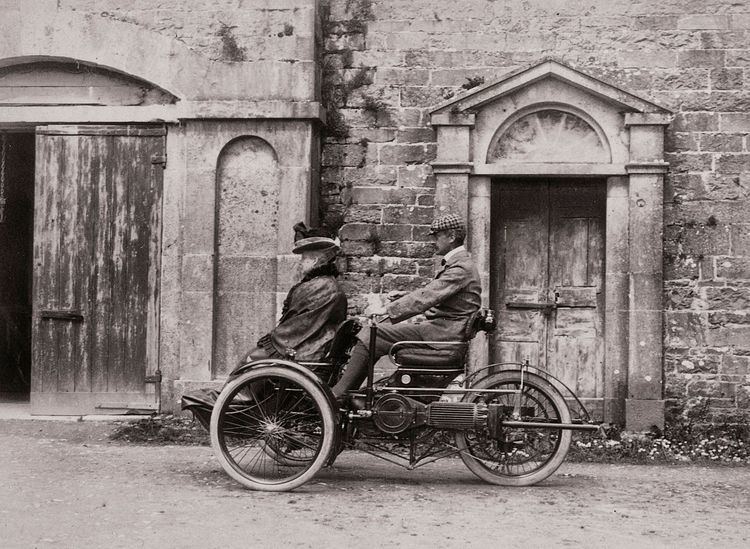Type Public Listed Company | Industry Automotive | |
 | ||
Founders Harry J. LawsonErnest T Hooley Headquarters 59, Holborn Viaduct, E.C., London, England Services Farming of patent rights | ||
Not to be confused with British Automobile Commercial Syndicate Limited
Contents
The British Motor Syndicate Limited (BMS) was a company formed in November 1895 by company promoter and entrepreneur Harry John Lawson. Lawson's aim was to use BMS to raise funds from the public to establish a business with a monopoly on petrol-driven cars by acquiring as many patents as possible related to such vehicles from Gottlieb Daimler, his business associates, and other sources.
It was never the company's intention to produce motor cars, but rather to exploit the patents it had purchased by charging substantial royalties to automobile manufacturers for the right to manufacture cars using those patents.
Patentees
By the time of the first public issue, twelve months after incorporation, the following patent holders had committed themselves to BMS:
and BMS had received more than £200,000 from English motor car manufacturers, leading names were Lawson's Daimler and Great Horseless.
Directors
Directors at the time of flotation, November 1896:
Brokers: Ernest T Hooley, Chapman & Rowe
Consulting Engineer: Frederick R. Simms
Educated opinions of the float
The Economist was reported by the Coventry Herald as saying that the public might judge for themselves if reasonable dividends could be earned on the inflated amount of the syndicate's capital. Furthermore "the publication [of the prospectus] has been followed by a chorus of repudiations" from those said to be connected with the syndicate, one way or another. In the opinion of The Economist the syndicate would be unable to bar the way to the industry's progress by insisting on exorbitant royalties.
Activities
The British Motor Syndicate was formed when cars still had to be preceded by a man on foot. Lawson could see this restriction would soon be lifted and acquired the British Daimler rights from Gottlieb Daimler's British agent Frederick R. Simms. By this time Hamburg-born London consulting engineer Simms had had these arrangements with his personal friend Gottlieb Daimler for some years. Daimler's engines were used by leading French manufacturers including Panhard-Levassor and Peugeot. Simms also received a licence fee from owners of cars built under Gottlieb Daimler's patents.
The general public promptly bought all the new capital of the November 1896 flotation despite the financial press's warnings of Lawson's failures with his other recent new flotations. Lawson then sold to embryo subsidiary business, British Daimler, the rights he had just bought from Simms – for near half the capital raised – and asked Simms as BMS consulting engineer to find suitable premises to begin manufacture of engines under the licence and complete cars. Simms found an ideal purpose-built building in Cheltenham belonging to John Henry Knight but Hooley had found a disused four-storey cotton mill in Coventry and despite its unsuitability Lawson bought that from his crony Hooley and so the motor industry developed in Coventry not Cheltenham. The new Coventry premises were shared with Edward Joel Pennington, a confidence trickster who obtained most of the cash BMS raised from the public in exchange for no cars.
The German Canstatt-Daimler business, later Daimler-Benz, had no financial interest in British Daimler or The British Motor Syndicate.
Collapse
Lawson's plan did indeed have a dampening effect on the fledgling British automobile industry. Herbert Austin, for instance, abandoned the development of his first Wolseley because of its too close similarity to a vehicle the patent for which was owned by BMS. But BMS ultimately failed, most obviously because of a 1901 court decision that gutted its business model, by which time rapid improvements in technology had made the company's patents obsolete in any case.
